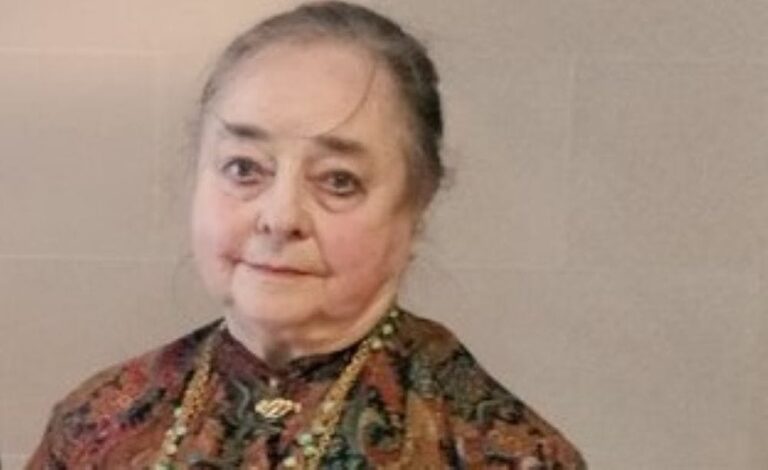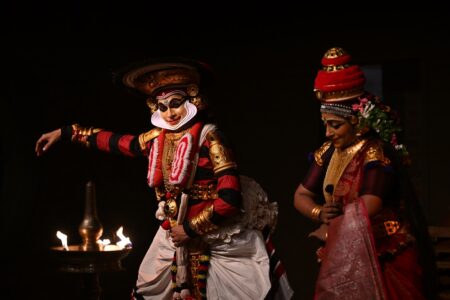Milena Salvini is a name familiar to both artists and fans of Kerala’s classical theatre forms. Her obsession for Kathakali has been unparalleled.
With Padmashree Milena Salvini’s demise yesterday in Paris, Kerala Kalamandalam has lost one of its passionate well-wishers. Historic has been the role played by her institution ‘Mandapa’ in Paris, for popularising Kathakali, Koodiyattam and other Indian classical art forms. Few are the veteran artistes who have not performed at Mandapa. Milena was instrumental in introducing the age-old Sanskrit theatre of Koodiyattam to the West and also for the UNESCO declaration about it as “An oral and intangible heritage of humanity”.
In the column Vintage Vignettes we carry excerpts from interview with Milena by G S Paul that was done two decades ago as a respectful homage to the great soul:
Kathakali’s popularity abroad and even the recognition of Koodiyattam by UNESCO owe much to her pioneering effort. In this connection, the tour she had organised for the Koodiyattom supremo Paimkulam Rama Chakyar in 1980 was a historical event as it introduced the age-old Sanskrit theatre, for the first time, to a foreign audience.
How did you develop this fascination for Kathakali and Koodiyattam?
Ever since I happened to read that unique book, ‘Kathakali _ The Sacred Dance Drama of Malabar’, by K. Bharatha Iyer. To this day, it has been the best work on this classical dance drama, especially written as it is against the psychological, geographical and mythological backdrop of the land of its origin. It was this inspiration that drove me to Kolkata first and then finally to Kalamandalam.
Milena Salvani, your memories at Kalamandalam must be sweet, isn’t it?
Not only sweet but also exciting. Those days, the emphasis was on intensive training. I had taken classes in Bharatanatyam as well. We got up at 3 a.m. and did eye exercises from 4 a.m. to 6 a.m. From 8 a.m. to 12 noon we had Cholliyattam every day. Afternoon classes were on aattakathas, the text, Sanskrit and the like. Abhinaya with gestures were taught from 5 p.m. to 7 p.m. It was the routine.
You have taken the Kalamandalam troupe on several occasions abroad. When did it start?
I took the Kathakali troupe first in 1967 and thereafter I have lost count. It was a very successful tour of Europe and the U.S. But the epochal one was the tour of the late Paimkulam Rama Chakyar, the celebrity who ventured to present Koodiyattam for the first time in an alien land, in 1980. The West knew about this highly stylised histrionic art only through him. And Rama Chakyar did it in the teeth of objection from all quarters. Even when he started teaching students of castes other than the Chakyars at Kalamandalam, he was at the receiving end. But he was undaunted.
How did people in the West receive the art form?
There is an inclination towards classical art forms in the west. The authenticity of tradition and the public at large are not enthused by experimentations. For such people, Koodiyattam and Kathakali are in tune with their taste.
Is the troupe for the coming tour wholly from Kalamandalam?
No, I am also taking a few veterans who belonged to Kalamandalam once. And even a couple of young actors who have passed out. It is a pity that once a student graduates from the institution, he is considered an outsider by the authorities of Kalamandalam. There are some very good talents and it is up to the institution to exploit their potential.
There has been fabulous expansion for Kalamandalam when compared to your times. How do you like the present atmosphere?
I am very happy that it has grown in size. But I feel that this growth has affected the systematic, traditional methods of training of the past considerably. For example, I am told that Cholliyattam classes happens only three days a week whereas it was an every-day event when I was a student in the 1960s. Growth should never be at the cost of art.
Do you think the university status will augur well for the institution?
Not at all. See, we have a similar institution of excellence for classical ballet in Paris, Opera. The focus there is on training, which is expected of such institutions. They must develop new techniques for which rigorous disciplining in the traditional pattern is the only way. It is not a meaningful attempt to produce artistes who are both scholars and performers. I believe that the university status can only be counter- productive as far as training in art forms like Kathakali is concerned. In such a case, Kalamandalam may lose its reputation.
But your alma mater Santhinikethan is a deemed university now?
Yes, but how many musicians or dancers of repute has it produced? I have not heard about any so far. The choice must be entirely the artiste’s . Whether to pursue further education or not. Kalamandalam should also organise periodic workshops in which celebrities from all over Asia should take part.
Are you in favour of institutionalised training of classical arts?
I am not. It must be only the gurukula sampradaya. A change of government here always brings with it a change of guards at the cultural institutions as well.
How far this practice is healthy?
But a change of administration need not bring about a change in the curriculum. As for the curriculum, the artistes should have the upper hand in formatting it.
Now that the UNESCO has recognised Koodiyattam, for which you were also instrumental, what can be the advantages?
I am not fully aware. But one can expect support to the institutions offering training in Koodiyattam. And of course both the art form and its practitioners will have to be protected. As against the present style of patronage, Kathakali or Koodiyattam should not be looked upon as commercial products.




